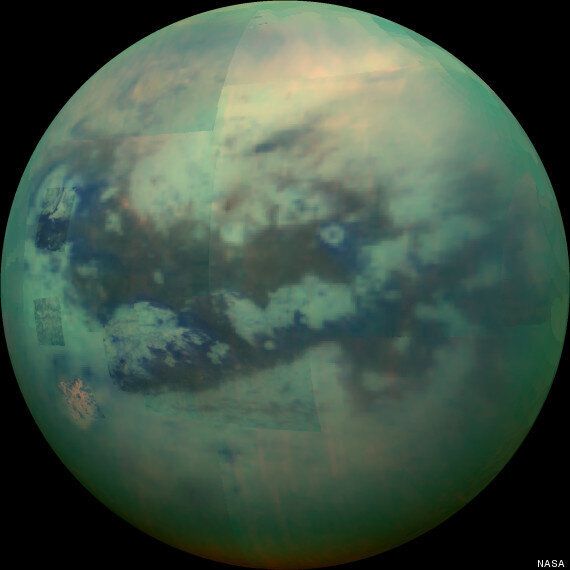Take a look at Titan and then at our own moon and you'd be forgiven for being a little jealous of Saturn's largest companion. It's absolutely stunning.

A rocky landscape pocketed my oceans of hydrocarbons is then overshadowed by huge methane clouds with rain down onto Titan's surface. It's the stuff of science fiction and yet not only have we captured this astonishing ball of rock but we've actually landed on it as well.
SEE ALSO:
Well to add to this, NASA's Cassini spacecraft has taken one of its best pictures yet in a November flyby that saw the spacecraft capture the moon's glistening surface at a distance of just 6,200 miles.
Even at that huge distance Cassini's infrared camera was able to capture the cloudy moon's almost alien surface, described by NASA in its latest post about the images.
"Saturn's frigid moon Titan has some characteristics that are oddly similar to Earth, but still slightly alien. It has clouds, rain and lakes (made of methane and ethane), a solid surface (made of water ice), and vast dune fields (filled with hydrocarbon sands)."
While Titan doesn't offer the same hope for finding alien life that Saturn's other moon Enceladus might have, it does boast one of the most Earth-like atmosphere's we've seen.